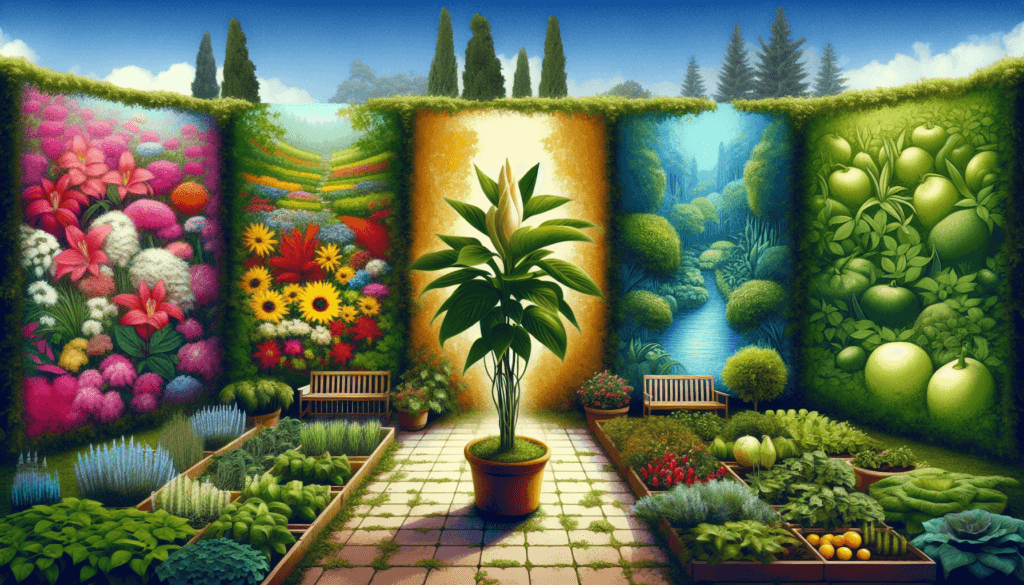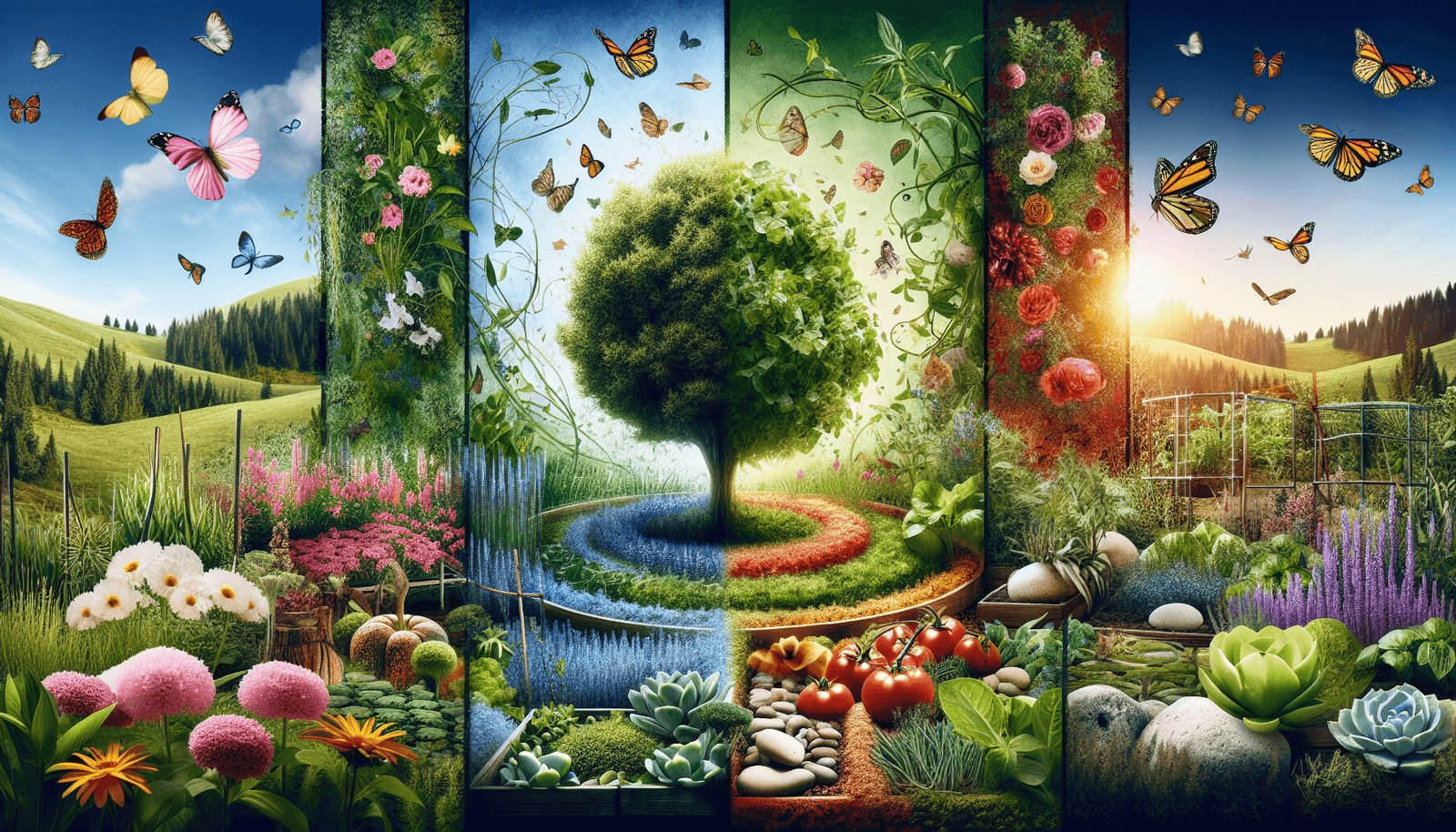Are you looking to add some greenery and beauty to your home? Well, look no further! In this article, we will explore the 4 types of gardens that you could easily plant and maintain. Whether you have a small balcony or a spacious backyard, there is a garden type that will suit your space and personal preferences. So, get ready to discover the joy of gardening and transform your space into a lush oasis.
1. Vegetable Gardens
If you’re looking to start your own vegetable garden, there are various options you can consider. One popular choice is a raised bed garden. This involves creating a raised area of soil that is enclosed by boards or other materials. Raised bed gardens are great because they provide excellent drainage, allow for better control of soil quality, and make it easier to maintain and harvest your vegetables.
Another option is a container garden, which is perfect for those with limited space or who want the flexibility of moving their garden around. Container gardens involve using pots or other containers to grow your vegetables. You can choose from a variety of container sizes and materials, allowing you to customize your garden to fit your needs and preferences.
For those who prefer a more traditional approach, in-ground gardens are a classic choice. These gardens involve planting directly in the ground, typically in rows or beds. In-ground gardens require more preparation in terms of soil conditioning and weed control, but they offer plenty of space for your vegetables to grow and thrive.
If you’re short on space or simply want to maximize your garden’s potential, vertical gardens are a fantastic option. Vertical gardens involve growing vegetables on a vertical structure, such as a trellis, wall, or fence. This not only saves space but also adds a unique visual element to your garden. You can grow climbing vegetables like beans and peas, or even use hanging baskets to grow smaller plants like strawberries.
2. Flower Gardens
Flower gardens are a popular choice among gardeners who want to add beauty and color to their outdoor space. There are different types of flower gardens you can create, depending on your preferences.
Annual gardens are filled with flowers that complete their life cycle in one growing season. These gardens are ideal for those who want to change the flowers in their garden each year and experiment with different combinations. Annuals offer a wide range of colors and varieties to choose from, allowing you to create a vibrant and ever-changing display.
Perennial gardens, on the other hand, consist of plants that come back year after year. Perennials are a great option if you want a low-maintenance garden that will continue to bloom for years to come. They offer a variety of colors, shapes, and sizes, and can be combined with other perennials or annuals to create a diverse and beautiful garden.
For those who prefer a more natural and wild look, wildflower gardens are the way to go. These gardens feature native wildflowers and grasses and require minimal maintenance. Wildflower gardens attract pollinators like bees and butterflies, making them not only visually appealing but also beneficial for the environment.
Cottage gardens are a popular choice for those who love a romantic and charming atmosphere. These gardens typically feature a mix of flowers, herbs, and vegetables, creating a whimsical and traditional feel. Cottage gardens often include climbing plants, like roses or clematis, and quaint pathways or arches to enhance their charm.

3. Herb Gardens
Herb gardens are a great addition to any home, providing culinary delights, healing properties, and delightful scents. There are different types of herb gardens you can create, depending on your interests and needs.
Culinary herb gardens are perfect for food enthusiasts who love to use fresh herbs in their cooking. These gardens usually feature a variety of herbs like basil, thyme, and rosemary, which can be harvested as needed for flavoring dishes. Culinary herb gardens can be grown in raised beds, containers, or even window boxes, making them accessible for anyone.
If you’re interested in the medicinal properties of herbs, a medicinal herb garden is a great choice. These gardens focus on herbs with healing properties, such as lavender for relaxation or chamomile for soothing upset stomachs. Medicinal herb gardens can be grown in a variety of ways, depending on the space you have available and the specific herbs you want to grow.
Fragrant herb gardens are designed to delight your senses with their pleasant aromas. These gardens often include herbs like lavender, mint, and lemon balm, which release their fragrances when touched or brushed against. Fragrant herb gardens can be placed near seating areas or pathways, allowing you to enjoy their scents as you relax or stroll through your garden.
For those with limited outdoor space, window box herb gardens are a fantastic option. These gardens involve planting herbs in small containers that can be hung or placed on windowsills. Window box herb gardens not only provide fresh herbs for cooking but also add a touch of greenery and beauty to your windows.
4. Fruit Gardens
Growing your own fruit at home is not only rewarding but also allows you to enjoy delicious and fresh produce. There are different types of fruit gardens you can consider, depending on the fruits you want to grow and the space available.
Orchard gardens are a dream come true for those who have plenty of space and want a large variety of fruit trees. These gardens typically feature apple trees, pear trees, cherry trees, and more. Orchard gardens require careful planning, as different fruit trees have different pollination and sun requirements. However, the payoff is worth it when you can enjoy baskets full of homegrown fruit.
Berry gardens are a fantastic option for those who love berries of all kinds. These gardens can include strawberries, raspberries, blueberries, and blackberries, among others. Berry gardens are relatively low-maintenance and provide a bountiful harvest of delicious and nutritious berries.
If you live in a warmer climate, citrus gardens are a great choice. These gardens feature citrus trees like oranges, lemons, and limes, which thrive in sunny and warm environments. Citrus gardens require regular watering and protection from cold temperatures, but the juicy and tangy fruits they produce are worth the effort.
For those with limited space, espalier gardens are a clever and beautiful solution. Espalier is a gardening technique that involves training trees to grow flat against a wall or fence, taking up minimal space while still producing an abundance of fruit. These gardens can be created with apple trees, pear trees, or even fig trees, and add a unique visual element to any outdoor space.
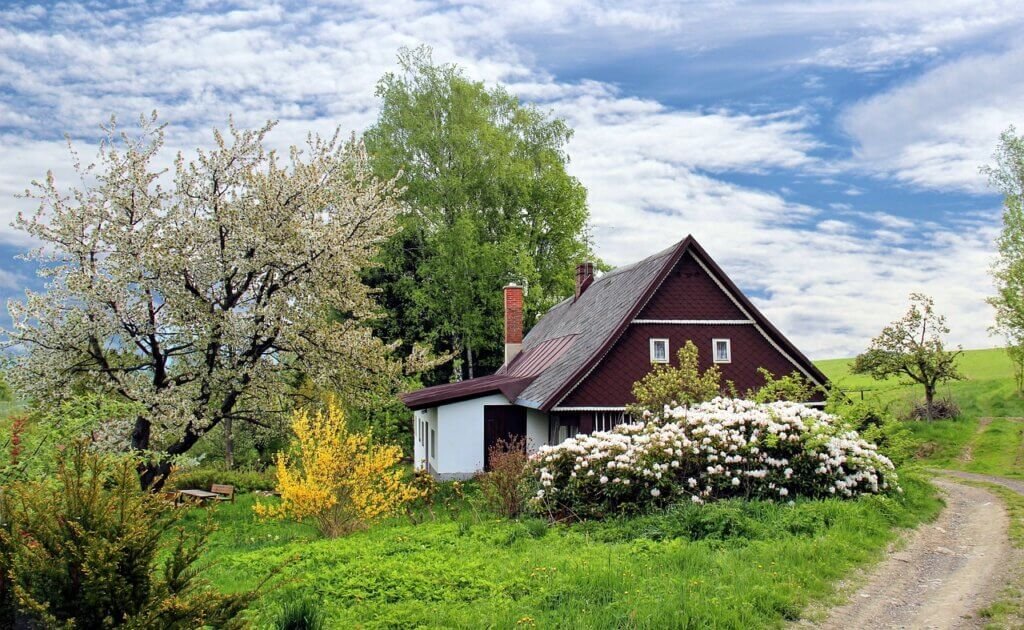
5. Water Gardens
If you love the serenity and beauty of water, a water garden might be the perfect choice for you. There are different types of water gardens you can create, each offering its own unique experience.
Koi pond gardens are a popular option for those who want to create a tranquil and visually stunning space. Koi ponds are typically large, deep, and filled with colorful koi fish. These gardens often include water plants like water lilies and provide a peaceful and relaxing environment.
Waterfall gardens are another beautiful choice for water enthusiasts. These gardens feature a cascading waterfall or fountain, which adds a soothing sound and dynamic element to the space. Waterfall gardens can include various water plants and can be customized to fit any style or space.
For those with limited outdoor space, container water gardens are a practical and portable option. These gardens involve utilizing containers like barrels or tubs to create a miniature water garden. Container water gardens can be placed on balconies, patios, or even indoors, allowing you to enjoy the calming presence of water wherever you are.
Bog gardens are a unique and specialized type of water garden that mimics the conditions found in natural wetlands. These gardens are generally created in low-lying areas or can be created by digging a hole and lining it with a pond liner. Bog gardens are perfect for growing plants that thrive in moist or waterlogged soil, like cattails or pitcher plants.
6. Rock Gardens
Rock gardens are an excellent choice for those who want to create a visually striking and low-maintenance garden. There are different types of rock gardens you can consider, each with its own unique charm.
Alpine gardens are inspired by the rocky landscapes found in mountainous regions, like the Alps. These gardens feature a variety of small, hardy, and drought-tolerant plants that thrive in rocky conditions. Alpine gardens often include rocks of varying sizes and shapes to create a natural and rugged look.
Japanese Zen gardens are renowned for their tranquility and simplicity. These gardens typically feature a combination of rocks, sand or gravel, and carefully placed plants. Japanese Zen gardens are designed to promote relaxation, meditation, and contemplation, making them a perfect addition to any outdoor space.
Xeriscape gardens are a practical choice for those living in dry regions or areas with limited water availability. These gardens are designed to minimize water usage and incorporate drought-tolerant plants, including various succulents and cacti. Xeriscape gardens can include rocks or gravel to add texture and visual interest.
Succulent gardens have gained popularity in recent years due to their unique and eye-catching appearance. These gardens focus on growing a variety of succulent plants, which are known for their water-storing abilities and ability to thrive in arid conditions. Succulent gardens can be created in containers, raised beds, or in-ground, and provide an exotic and low-maintenance landscape.
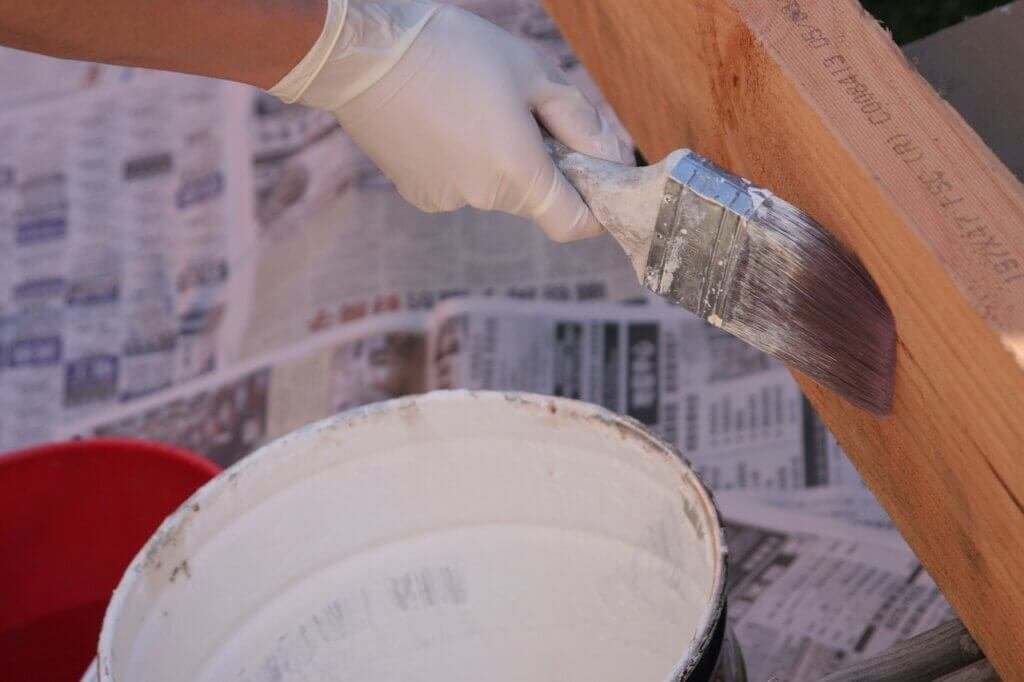
7. Shade Gardens
If your garden is mostly shaded throughout the day, don’t fret! Shade gardens can be just as beautiful and vibrant as their sun-soaked counterparts. There are different types of shade gardens you can create, depending on the level of shade and plant preferences.
Woodland gardens are inspired by the natural beauty and tranquility of the forest floor. These gardens often feature shade-loving plants like ferns, hostas, and woodland flowers. Woodland gardens create a peaceful and serene atmosphere, perfect for relaxation and enjoying nature.
Hosta gardens are a popular choice for those who love lush greenery and beautiful foliage. Hostas are shade-loving plants known for their large leaves and wide variety of shapes and colors. Hosta gardens can be combined with other shade-loving plants or can be the main attraction, providing a stunning display of textures and shades of green.
Fern gardens are another option for shade enthusiasts. Ferns are perfect for adding a touch of elegance and grace to your garden with their delicate fronds. Fern gardens can include various types of ferns, each with its own unique shape and size, creating a visually captivating and cooling oasis.
Moss gardens are a great choice for those who want to create a lush and velvety green space. Moss thrives in shaded and moist areas, making it an excellent option for shade gardens. Moss gardens can be created by allowing moss to naturally grow on rocks or other surfaces or by cultivating moss on a specific area in your garden.
8. Butterfly Gardens
Butterfly gardens are not only visually stunning but also play an essential role in supporting pollinators and preserving biodiversity. There are different types of butterfly gardens you can create, each focusing on specific elements that attract and nourish butterflies.
Nectar plants are a crucial element in any butterfly garden. These plants provide a source of nectar to adult butterflies, which they require to fuel their flights and activities. Nectar plants include flowers like butterfly bush, coneflower, and lavender, which offer abundant nectar and are brightly colored to attract butterflies.
Host plants are equally important in butterfly gardens, as they provide an ideal environment for butterflies to lay their eggs and for caterpillars to feed. Host plants are specific to different butterfly species, so it’s important to research which plants are preferred by the butterflies in your region. Examples of host plants include milkweed for monarch butterflies and dill for swallowtail butterflies.
Water features, such as birdbaths or small ponds, are essential in butterfly gardens as they attract and provide water for butterflies to drink. Butterflies are attracted to shallow water sources or mud puddles, so incorporating these features can significantly increase the number of butterflies in your garden.
Sun-loving plants are also key in butterfly gardens, as butterflies are ectothermic and rely on the sun to warm their bodies. Choosing plants that thrive in full sun will provide optimal conditions for butterflies to bask and gain energy.
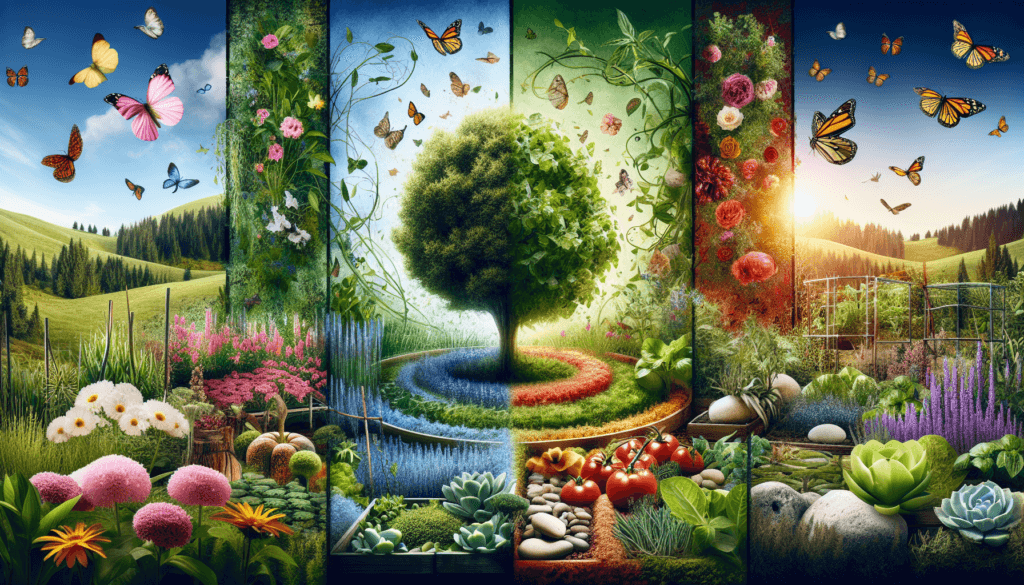
9. Container Gardens
Container gardens are a flexible and versatile option for those who want to garden but have limited space or specific needs. There are different types of container gardens you can create, depending on your preferences and available space.
Indoor container gardens are perfect for bringing nature indoors, even if you don’t have a backyard or outdoor area. These gardens can be created using a variety of containers, from pots to hanging baskets, and can include a wide range of plants, including herbs, flowers, or even small vegetables. Indoor container gardens add color and life to any room and provide a connection to nature even in urban environments.
If you have a balcony or patio, you can create a balcony or patio container garden. These gardens allow you to enjoy the benefits of gardening while utilizing the limited space available on your balcony or patio. Balcony or patio container gardens can include a mix of flowering plants, herbs, or even dwarf fruit trees, providing a beautiful and functional outdoor space.
Hanging basket gardens are a fantastic way to add visual interest and verticality to your garden. These gardens involve planting flowers or trailing plants in hanging baskets, which can be suspended from hooks or brackets. Hanging basket gardens are ideal for creating a lush and colorful garden, especially in areas where space is limited.
Vertical wall gardens are a creative and space-saving option for those who want to garden on walls or fences. These gardens can be created using specially designed planting systems or by repurposing materials like pallets or shoe organizers. Vertical wall gardens can include a variety of plants, from flowering vines to herbs, and add a unique and eye-catching element to your outdoor space.
10. Formal Gardens
Formal gardens are designed to create an elegant and symmetrical landscape that reflects order and precision. There are different types of formal gardens you can create, each with its own distinct style and features.
Parterre gardens are characterized by their intricate and geometric patterns formed by hedges or flower beds. These gardens often feature symmetrical designs and can be viewed as pieces of living art. Parterre gardens can include a combination of flowers, herbs, or even boxwood hedges to define the patterns and create a structured and visually pleasing landscape.
Knot gardens are similar to parterre gardens but focus specifically on creating intricate knot-like patterns with low-growing plants like shrubs or herbs. These gardens were popular during medieval times and often incorporate medicinal or culinary herbs to add functionality to the design. Knot gardens are perfect for those who appreciate geometric precision and historic charm in their outdoor spaces.
Topiary gardens are known for their artful and whimsical shapes created by trimming or training plants into ornamental figures. These gardens typically feature shrubs or trees shaped into animals, geometric designs, or other imaginative forms. Topiary gardens require skill and patience to maintain, but the results are truly enchanting and can be a unique focal point in any garden.
Rose gardens, as the name suggests, focus on the cultivation of various roses. These gardens can be designed in a formal style, incorporating symmetry, straight lines, and geometric patterns, or can have a more relaxed and natural feel. Rose gardens offer an abundance of colors, fragrances, and varieties, making them a romantic and timeless choice for any garden enthusiast.
With such a wide range of garden types to choose from, you have the perfect opportunity to create a beautiful and personalized outdoor space that reflects your unique taste and preferences. Whether you opt for a vegetable garden, flower garden, herb garden, fruit garden, water garden, rock garden, shade garden, butterfly garden, container garden, or formal garden, the joy of gardening and the rewards it brings are within your reach. So grab your gardening tools, get your hands dirty, and let your creativity and love for nature flourish. Happy gardening!
